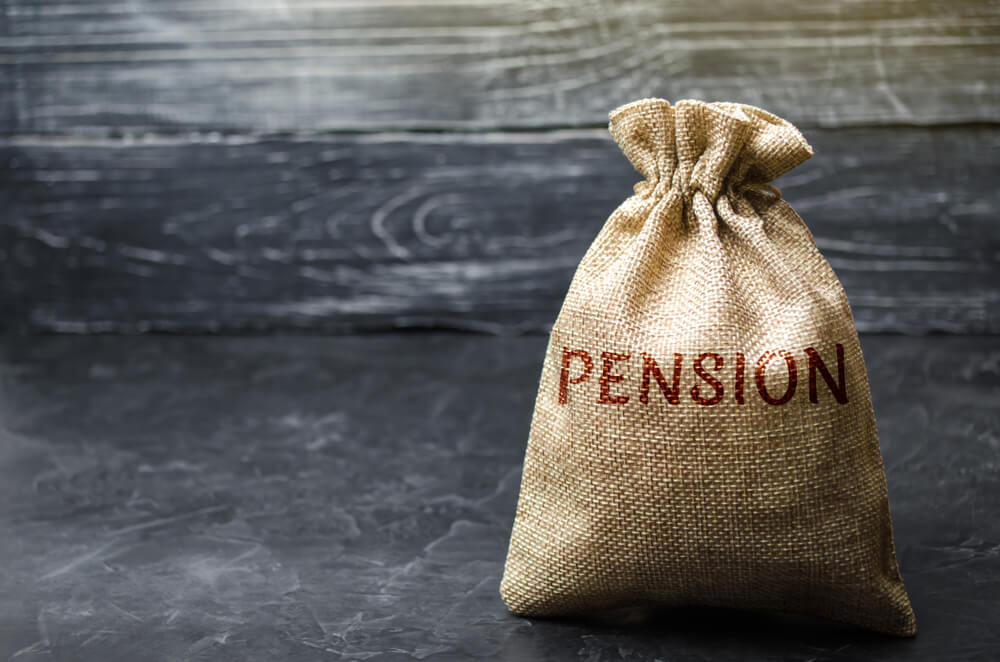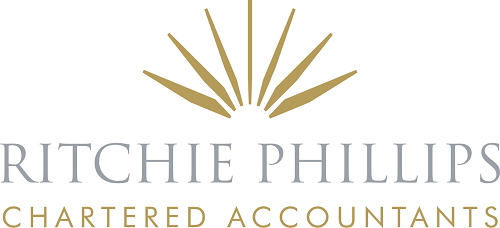In this second post in our End of Year Tax Planning series, we take a look at tax planning measures you may wish to consider now if you are an entrepreneur, running a business, or a resident foreigner (or Non-Dom). Reviewing your financial affairs is an important part of ensuring you pay the correct amount of tax but can also help with wealth management and accumulation, investment strategy and liquidity.
Entrepreneurs and Businesses

Corporation tax rates
From April 2023, the corporation tax rate will increase to 25% for companies with profits over £250,000. The 19% rate will become a small profits rate payable by companies with profits of £50,000 or less. Companies with profits between £50,001 and £250,000 will pay tax at the main rate reduced by a marginal relief, providing a gradual increase in the effective corporation tax rate.
If you have associated companies, the small profits limit of £50,000 and the upper limit of £250,000 will be divided equally between your associated companies. For example, if there are five associated companies, the effective limits will become £10,000 and £50,000 per company. Broadly speaking, associated companies are those in the same group of companies or are under common control.
Capital allowances
The Annual Investment Allowance (AIA) gives a 100% write-off on certain types of plant and machinery up to certain financial limits per 12-month period. The limit of £1 million has been made permanent.
The government will also extend the 100% first year capital allowances for electric vehicle charge points to 31 March 2025 for corporation tax purposes and 5 April 2025 for income tax purposes.
Profit Extraction

Dividend taxation
The regime for taxing dividend income, whether from a family company or quoted investments, is as follows:
- The dividend tax allowance means the first £2,000 of dividends are tax free
- For dividends above £2,000, the rates of tax on dividend income is 8.75% for basic rate taxpayers, 33.75% for higher rate taxpayers and 39.35% for additional rate taxpayers.
It used to be the case that dividends were the most tax efficient way of extracting profits from a family company because of the impact of national insurance contributions.
This remains the case up to 5 April 2023, but thereafter, it will normally be the case for basic rate taxpayers only.
There are a number of implications depending on your circumstances:
- Salary
In taking dividends, it is normal to retain a minimal salary at or over the Lower Earnings Limit for national insurance contributions, currently £6,396, to qualify for state benefits, particularly qualifying years for your state pension. If the salary is set between the Lower Earnings Limit and the Primary Threshold, currently £12,570, national insurance contributions will not be payable.
However, a low salary may have an impact on the level of pension contributions that may be paid personally. Consideration could be given to salary sacrifice with the employer making the pension contributions.
- Adult children
In circumstances where your adult children can acquire shares in your family company, if they receive no more than £2,000 in dividends, they will have no tax to pay on this income. This might prove a tax efficient way of transferring income to your children without incurring any dividend tax on that income yourself. As a variation on this approach, dividends within the basic rate band would provide greater funds, albeit subject to a 7.5% dividend tax charge, and could fund post 18 education or help towards a first house purchase.
- Gift Aid
There is a further complication if you make significant charitable donations under Gift Aid. The tax credit on your donation has to be funded out of the income tax and capital gains tax you pay. If you are considering making substantial donations under Gift Aid and you have substantial dividend income most tax years, it will be necessary to ensure you have paid sufficient income tax and capital gains tax otherwise you will receive a demand for the shortfall from HM Revenue and Customs.
- Interest
If you have lent money to your company, paying interest on your loan is another way to extract profit tax efficiently as no national insurance contributions will be payable on the interest which will be tax deductible against your company’s profits.
There is no longer a tax credit on dividends meaning it will only be the income tax you pay that is available to credit the tax withheld on your donations under Gift Aid.
Capital Expenditure

Up to 31 March 2023, companies investing in qualifying new plant and machinery are able to benefit from capital allowances, generally referred to as ‘super-deductions’, of 130% on most new plant and machinery.
There is therefore less than one month left in which to incur capital expenditure qualifying for the super deduction.
The super-deduction is not available for unincorporated businesses.
Annual Investment Allowance (AIA)
AIA is a particularly valuable relief for businesses. 100% relief is given for expenditure on most types of plant and machinery and many fixtures in buildings.
The AIA limit of £ 1 million on qualifying expenditure has been made permanent. The £ 1 million limit is to be spread among related businesses.
Expenditure above this limit, or not qualifying for the AIA, will generally attract an annual capital allowance of 18% or 6% (depending on the nature of the expenditure) on a reducing balance basis.
Environmentally friendly equipment
Capital allowances can be claimed on expenditure on certain types of assets used in your business. Certain energy-saving, environmentally beneficial or water-efficient equipment and installations may attract immediate tax relief at 100%.
R&D expenditure
As the name suggests, there are reliefs available for qualifying research and development expenditure.
New business premises
Relief is given at 3% per annum (i.e. over 33 years) on expenditure on new non-residential buildings (including conversions and renovations). This relief is known as Structures and Buildings Allowance.
If you are planning to acquire or refurbish a business property, or to purchase plant or equipment such as heating or ventilation systems, check with the contractor or supplier whether the items you are installing qualify for the increased energy saving allowance.
Timing of disposal
The disposal of cars and other equipment made before or after the end of your accounting period may affect the taxable profit for the year.
Commercial property (including Furnished Holiday Lettings)
If you are intending to purchase commercial property (including Furnished Holiday Lettings) containing fixtures, seek advice to ensure that the maximum capital allowances are claimed. On purchase, any value attributed to the fixtures must be agreed by a joint election between the seller and the purchaser.
CGT: Business Assets Disposal Relief

Business Assets Disposal Relief (BADR)
BADR reduces the applicable rate of capital gains tax to 10% on gains up to the lifetime limit of £ 1 million per individual taxpayer.
BADR also extends to sales of shares by certain individuals involved in running the business provided that for two years before the disposal of the shares, you own at least 5% of the ordinary share capital, exercise 5% of the voting rights, and are an officer or employee of the company.
For BADR purposes, the spouse or civil partner transferring the asset does not pass on their ownership period to the spouse or civil partner receiving the asset, so if the transferee does not hold the asset for the qualifying period independent to their spouse’s ownership period, the disposal will not qualify for BADR.
BADR is also available in respect of gains made on the disposal of certain related assets.
There are restrictions if:
- There has been personal use of an asset within the business sold
- The asset was only used in the business for part of its ownership period
- Your involvement in the business is for a lesser period than the ownership of the asset
- The business has rented the asset.
There are further requirements in relation to the disposal of shares. In essence, these provide that you must be beneficially entitled to at least 5% of the distributable profits and assets for distribution to equity holders on a winding up and to the proceeds on a disposal of the whole of the ordinary share capital.
Protection from dilution was introduced from 6 April 2019. Where a future share subscription can result in existing shareholders with a share interest greater than 5% being diluted to less than 5% with the loss of BADR, protection of the gain arising before dilution will become available.
The detailed conditions for BADR are complex. Early and continual tax advice is essential to avoid losing the benefit of BADR.
IHT: Business Property Relief
Business Property Relief (BPR) can reduce or completely remove the value of a business from the charge to IHT. It applies to both lifetime gifts and on death. If the donor dies within seven years of such a gift, BPR will only be given on death if the original property is still owned by the donee at the date of the donor’s death and still qualifies as relevant business property.
Relief is currently available at 100% for a business or shares in an unquoted trading company. Relief at 50% applies to a controlling holding of quoted shares; and to land, buildings, plant and machinery used in a business carried on by the transferor, a partnership of which they are a member or a company they control.
The property must have been owned for at least two years prior to the transfer in order to qualify for relief.
Pension Contributions

Background
You get tax privileges as you put money in and whilst you invest. In addition, you only pay tax when you take money out and even then there is the tax free lump sum to be taken.
The concept behind investing in a pension scheme is sound.
By adequately funding a pension scheme, it becomes possible to consider inheritance tax planning as your post-retirement standard of living will have been secured.
Net relevant earnings
Tax relief on individual pension contributions (including any third party contributions) is restricted to the higher of £3,600 or 100% of relevant UK earnings.
If the pension contributions in a tax year are more than 100% of their relevant earnings (or £3,600 if greater), no tax relief is given on the excess pension contributions. The excess contributions may be repaid, but pension providers are not obliged to refund such contributions. The excess tax relief claimed by the pension provider on the individual’s behalf is returned to HMRC.
Employer contributions are not restricted by the employee’s relevant UK earnings. They do, however, count towards the annual allowance and tapered annual allowance.
Annual allowance
The tax relief you will receive on your pension contributions is capped at the maximum of your earnings or, if less, the amount of £40,000 unless reduced. The tax relief will be given at your marginal tax rate.
It may be possible to carry forward unused relief for up to three years. In 2022/23, any unused relief from the three previous years (£40,000 for each of 2019/20, 2020/21 and 2021/22) may be utilised with the current year allowance against your income in 2022/23.
Securing full tax relief will be subject to the level of your pensionable earnings.
Contributions made by your employer, including those made under a salary sacrifice arrangement, will also contribute to using up the annual allowance.
Moreover, no tax relief will be obtained for contributions in excess of this limit and you will be liable to an annual allowance charge to remove the tax relief on the excess contributions.
Restriction on pension tax relief for higher earners
The government introduced a taper to the annual allowance for those with taxable income in excess of £200,000 and adjusted income over £240,000 (taxable income plus individual and employer pension contributions). For every £2 of adjusted income over £240,000, an individual’s annual allowance will be reduced by £1, down to a minimum of £4,000.
In addition, negotiation with your employer may be required if pension contributions have been reduced by the employer so that you receive additional salary for the pension contributions not paid by your employer.
Cars and Fuel

The taxable benefit of a company car is calculated by multiplying the list price, and any delivery fees and additions, by a percentage (up to a maximum of 37%) based on the car’s CO2 emission levels.
If your employer also provides you with free fuel for your company car, the tax charge is based on the car’s CO2 emissions. This will be the same percentage used to calculate the taxable car benefit and is applied to a fixed amount of £25,300 in 2022/23, making the tax cost £3,7,44 if you are a higher rate taxpayer driving a company car attracting the maximum percentage.
If you are provided with a company van and use it for private journeys, the basic benefit on which tax is charged is £3,500 for 2022/23, plus £688 if free fuel is provided for private journeys.
If you use your own car for business purposes, you can be paid a tax-free mileage allowance provided it does not exceed 45p per mile for up to 10,000 business miles and 25p per mile for each additional mile over 10,000, with an extra 5p per mile for each work passenger who travels with you.
If you use your own bicycle or motorcycle for business journeys, you can receive a tax-free mileage allowance of 20p per mile (bicycles) and 24p per mile (motorcycles).
Salary Sacrifice

Electric cars
For electric cars (CO2 emissions under 75g/km) there is availability to deduct the electric car benefit from the employee’s gross salary rather than the usual benefit in kind rules. This saves NIC for both the employer and employee and also income tax for the employee too.
Pension considerations
Beyond the occupational pension scheme, deducting pension contributions from gross salary saves NIC for both the employer and employee and also income tax for the employee too. Employees are also entitled to
£500 annually towards pension advice, this can also be provided via salary sacrifice, in a one off payment, or over the year, saving NIC and income tax also.
Working from home
Since the pandemic began in March 2020, millions of employees up and down the country have been required to work from home. There are tax advantages to this in addition to being able to keep on top of your laundry. These advantages include reimbursed home business expenditure including equipment to enable home working. Additionally, if your employer required you to work from home there is a £6 weekly allowance that can be deducted from your employment income and, there is no requirement to keep evidence of these additional costs.
Making Tax Digital (MTD)
MTD is a government initiative to modernise HMRC’s tax system, with the aim of making the whole process of administrating tax simpler and more efficient. However, in a government U-turn, MTD will not come into effect until April 2026, with HMRC saying this latest deferral will give business owners more time to transfer to the new system.
End of Year Tax Planning for Resident Foreigners (and Non-Doms)

Tax Residence: Statutory Residence Test
The Statutory Residence Test (SRT) determines an individual’s tax residence in the UK. The rules can be complex and some cases will remain borderline requiring careful consideration.
The SRT has three main parts which are applied in the following order:
- Automatic overseas tests for non-residence
- Automatic UK tests for UK residence
- Sufficient ties tests to the UK.
Essentially the SRT is a day-counting test with complexities. You need to ensure that you are aware of the maximum number of days you can spend in the UK without triggering tax residence.
If you were non-resident for 2021/22, or if you left the UK during 2021/22, you will need to ensure that you satisfy the tests to remain non-resident for 2022/23.
If you intend to leave the UK on or before 5 April 2023 or during 2023/24, start planning now to ensure that you are regarded as non-resident under the SRT.
When leaving or arriving in the UK, consideration should also be given to the tax regime in the other country. Likewise, if you are planning to move to the UK, you need to ensure that you allow sufficient time for pre-arrival tax planning to be carried out well in advance of acquiring UK tax residence.
Non-Domiciliaries

Deemed domicile
Fundamental changes were brought in with effect from 6 April 2017 for resident foreigners, or “non-doms” as they are sometimes called.
The concept of deemed domicile in the UK for all tax purposes (i.e. income tax, capital gains tax and inheritance tax) applies to individuals who have been tax resident in the UK for at least 15 years out of the past 20 years.
These rules have been extended to catch individuals born in the UK who have acquired a domicile of choice outside of the UK but who return to the UK. Even if they maintain their domicile of choice outside the UK, they will be treated as domiciled in the UK at the point they become UK tax resident.
Once deemed domiciled, an individual is taxed on worldwide income and capital gains on an arising basis and cannot access the remittance basis of taxation. There is some important but limited protection available for trusts set up before an individual becomes deemed domiciled.
Remittance basis
UK resident non-doms who are not deemed domiciled can choose whether to be taxed on worldwide income and gains as they arise (the arising basis) or to claim the remittance basis.
The remittance basis allows you to only pay tax on your overseas income and overseas capital gains to the extent that the funds are brought to or used in the UK but will usually mean you lose your personal allowance and the CGT annual exemption.
Some longer-term residents in the UK must pay an annual Remittance Basis Charge (RBC) which is: £30,000 if you have been tax resident in the UK for at least seven out of the previous nine UK tax years; or £60,000 if you have been tax resident in the UK for at least 12 out of the previous 14 UK tax years.
Careful consideration should be given to the timing of overseas income and asset disposals. It may be beneficial to realise significant overseas income and/or gains in a single tax year, and to pay the RBC for that year, and then file your tax return on the arising basis in other years.
Annual Tax for Enveloped Dwellings (“ATED”) Revaluation
ATED applies to affected properties held by non-natural persons, such as companies, partnerships with companies as a member and collective investment schemes.
Properties within ATED are subject to a revaluation as at 1 April 2022, which will form the basis for the ATED charge for 2023/24 for properties held at 1 April 2022. Properties acquired after this date, will be valued at their cost.
It is important to remember that ATED returns must be filed for relevant properties even if no ATED is due because, for example, the property is held for investment purposes and is rented to a third party or the property is held for development or as trading stock.
This is likely to mean that some properties are now within the scope of ATED having for the first time been valued at over £500,000 for these purposes.
You’ll find Part I of our End of Year Tax Planner here: Tax Planning.
If you would like to discuss any matters arising from this post, or in relation to your tax and accounting affairs, please get in touch.
